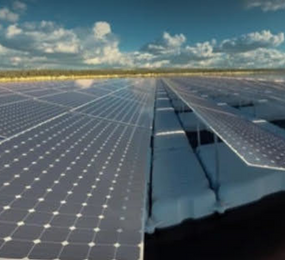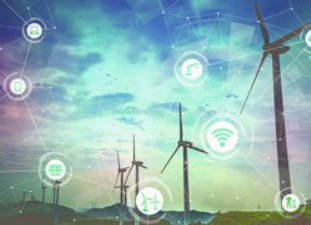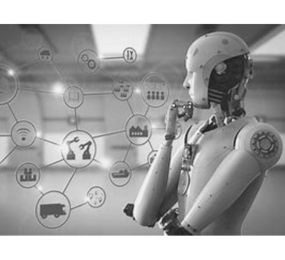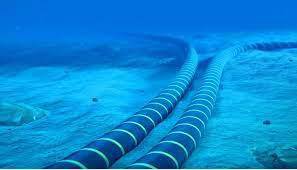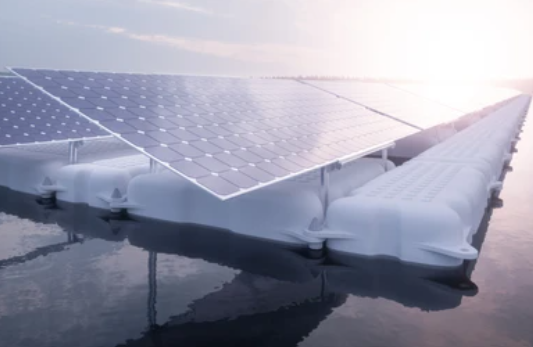Climate change and quickly depleting nonrenewable energy sources are a driving force behind sustainable energy research and development that is impacting all countries and enterprises. The development of green energy, or renewable energy, is now a critically active and growing research topic. Of the many kinds of renewable energy, solar power is the most common and well-known source of energy which can be obtained easily, and has fewer limitations to purchase and install. Solar energy generation is still comparatively expensive when compared to fossil fuels, and the methods for storing the energy is often insufficient for power supply through the night, prolonged storms and overcast cloudy weather.
Solar power systems and their related technologies have developed into a globally utilized green energy source. Given the relatively high installation costs, low conversion rates and battery capacity issues, solar energy is still not a widely applied energy source when compared to traditional energy sources. Despite the challenges, there are many innovative studies of new technologies such as machine learning, artificial intelligence, big data, IoT and new methods for improving solar energy transformation efficiency to improve the competitiveness of solar energy in the marketplace.
Artificial intelligence (AI) and machine learning (ML) have become important technology solutions as the industry is constantly looking for ways to cater to the rapidly increasing demand for clean, cheap, and reliable energy. These advanced technologies have the potential to analyze the past, optimize the present, and predict the future. This means that AI and ML have the potential to solve most of the challenges that currently prevail the solar industry.
With technology making rapid advancements, the renewable energy sector has made significant progress in the last decade. However, there are a few challenges that still prevail that can be addressed with the help of AI and ML. There is no doubt that the demand for solar energy is and will increase in the near future which makes it more important for the investment in emerging technologies such as AI, ML, and IoT to improve productivity and overcome the shortfalls.
In fact, solar energy companies have greatly benefited from the power of AI, machine learning predictive models, and data science over the past years. They have managed to lower their costs, make better predictions, and increase their portfolio’s rate of return.
This brings me to the role machine learning could have in the overall solar analytics and spectrum. Even though it is in its early stages of implementation, machine learning could revolutionize the way we deal with solar energy. Its impact ranges supporting better solar power plant forecasting, playing a crucial role in deciding where to build a plant when accurate or limited location data is available and Machine learning techniques help maintain smart grid stability.
The global solar photovoltaic (PV) installed capacity in 2013 was 138.9 GW and it is expected to grow to over 455 GW by 2021. However, solar power plants still have a number of limitations that prevent it from being used on a larger scale. One limitation is that the power generation cannot be fully controlled or planned for in advance since the energy output from solar power plants is variable and prone to fluctuations dependent on the intensity of solar radiation, cloud cover and other factors. Another important limitation is that solar energy is only available during the day and batteries are still not an economically viable storage option making careful management of energy generation necessary. Additionally, as the installed capacity of solar power plants grows and plants are increasingly installed at remote locations where location data is not readily available, it is becoming necessary to determine their optimal sizes, locations and configurations using other methods. Machine learning techniques provide solutions that have been more successful in addressing these challenges than manually developed specialized models.
Accurate forecasts of solar power production are a necessary factor in making the renewable energy technology a cost-effective and viable energy source. Machine learning techniques can correctly forecast solar power plant generation at a better rate than current specialized solar forecasting methods. In a study conducted by Sharma et al, multiple regression techniques including least-square support vector machines (SVM) using multiple kernel functions were used in the comparison with other models to develop a site specific prediction model for solar power generation based on weather parameters. Experimental results showed that the SVM model outperformed the others with up to 27 percent more accuracy.
Furthermore, machine learning techniques play a crucial role in assisting decision making steps regarding the plants location selection and orientation selection as solar panels need to be faced according to solar irradiation to absorb the optimal energy. Conventional methods for sizing PV plants have generally been used for locations where the required weather data (irradiation, temperature, etc.) and other information concerning the site is readily available. However, these methods cannot be used for sizing PV systems in remote areas where the required data are not available, and thus machine learning techniques are needed to be employed for estimation purposes. In a study conducted by Mellit et al., an artificial neural network (ANN) model was developed for estimating sizing parameters of stand-alone PV systems. In this model, the inputs are the latitude and longitude of the site, while the outputs are two hybrid-sizing parameters. In the proposed model, the relative error with respect to actual data does not exceed 6 percent, thus providing accurate predictions. This model has been evaluated on 16 different sites and experimental results indicated that prediction error ranges from 3.75-5.95 percent with respect to the sizing parameters. Additionally, metaheuristic search algorithms address plan location optimization problems by providing improved local searches under the assumption of a geometric pattern for the field.
Lastly, to maintain grid stability, it is necessary to forecast both short term and medium term demand for a power grid with renewable energy sources contributing a considerable proportion of energy supply. The MIRABEL system offers forecasting models which target flexibilities in energy supply and demand, to help manage the production and consumption in the smart grid. The forecasting model combines widely adopted algorithms like SVM and ensemble learners. The forecasting model can also efficiently process new energy measurements to detect changes in the upcoming energy production or consumption. It also employs different models for different time scales in order to better manage the demand and supply depending on the time domain.
Ultimately, machine learning techniques support better operations and management of solar power plants.
How Artificial Intelligence Technology can help Revolutionalise Solar Analytics
Artificial Intelligence (AI) will play a pivotal role in many industries, through business intelligence and solving problems quicker than humans. Solar is no exception. Here’s how AI technology improves the reliability of renewable energy and modernizes the overall grid.
A one of a kind opportunity exists to apply AI to a particular part of the clean energy value chain: materials. Materials fill in as the structure blocks of clean energy, for example, the solar cells that make up the photovoltaic panels found on rooftops. Enhancing the materials used to manufacture parts of clean energy is significant on the grounds that current materials are frequently lethal, non-earth rich, and require carbon-concentrated processing.
This situation shows an opportunity for the clean energy manufacturing sector. Applying AI to the advancement of new materials can decrease embedded emissions, toxicity and costs while saving researchers valuable time in the lab. Experiments done by trial-and-error are frequently rehashed a lot of times before a breakthrough happens. Rather, AI could automate complex logical tasks and empower analysts to concentrate on tasks that require more creativity and ingenuity.
Utilizing AI along these lines can give producers an edge. Manufacturers will in general put resources into upgrading downstream production capacities, which has prompted a few AI applications in sensor innovations and process optimisation. Utilizing AI for upstream design purposes, nonetheless, is an undiscovered business opportunity that could decrease the time it takes to find new materials, opening up capital for deployment and commercialisation strategies.
Some of the other advantages of applying Artificial Intelligence in the Solar Analytics are also as follows:
- Smart, Centralized Control Centers
Devices and sensors of a grid are mostly interconnected to collect huge amounts of data. When AI is integrated into the system, this data can give new insights to the grid operators. It offers flexibility to the energy suppliers to cleverly adjust the supply with demand. The advanced load control systems can be installed with the equipment, such as industrial furnaces or large AC units, which can automatically switch off when the power supply is low. Intelligent storage units can also be adjusted based on the flow of supply. Along with this, making weather and load predictions with the help of smart sensors and advanced sensors which will improve the overall integration and efficiency of renewable energy.
- Improved Integration of Microgrids
The way of handling distributed energy goes through a broad acceptance of microgrids. AI-powered control optimization can solve power quality issues and bottlenecks. Intelligent algorithms have the potential to provide real-time control over the dynamic nature of the grid below the substation autonomous controls. Algorithms that are available due to AI can also help to improve system optimization as new devices and new generation sources are integrated.
- Improved Safety and Reliability
AI not only has the ability to manage the intermittency, but it can also provide improved safety, efficiency, and reliability. This helps companies understand the consumption patterns, identify the energy leakage and health of the devices.
- Expand the Market
Integrating AI will help suppliers expand the marketplace by introducing new service models and encouraging higher participation. Data related to energy collection can be analyzed with the help of AI. Such technologies can also provide insights regarding energy consumption. This helps suppliers to optimize the existing services and launch new service models. Retailers benefit from such insights to target new consumer markets.
- Intelligent Energy Storage
Undoubtedly, storage technology is very helpful to solve problems related to the seasonal nature of solar and wind energy sources. But, due to the chaotic and periodic dynamics of these sources on both demand and supply side, battery hardware alone can’t bring true energy values. As the situation is complex, a simple solution cannot be the only savior. There needs to be a proper control production-consumption and energy storage. This can only be done when sophisticated software is available. This is where AI plays a vital role. By pairing RE with AI-driven storage we can make a change in paradigm.
- What does the future hold?
According to a recent paper published by DNV GL, AI will increasingly automate operations in the coming years in the solar industries and boost efficiencies across the renewable energy sector. An increasing number of sensors are expected to be installed along with the increase in easier-to-use ML based tools, and the continuous expansion of data monitoring, processing and analytics capabilities to create new operating efficiencies.
Without a doubt, industry stakeholders will witness AI benefits in several areas, including:
- Remote inspection is one of the main areas where robotics plays an important role, with additional and new benefits in maintenance and troubleshooting
- Crawling robots are built in a way that can get close to a structure’s surface giving rise to a new set of technologies such as microwave and ultrasonic transmitters and receivers, making it easier to reveal faults in materials
- Autonomous driving robots can optimize the supply chain process. This has the potential to build an entire optimize solar farm
- To carry out effective and efficient scrutiny of solar panels, autonomous drones with real-time artificial intelligence supported analysis will become the primary tool.
- AI applications fast-tracking due diligence. This will reduce the time investment of planning and analysis that today requires many human hours.
The above has shown that machine learning and artificial intelligence are set to revolutionalise the solar industry in no time. The need for these disruptive technologies cannot be over emphasized as all industries are keying into advanced analytics to create a more enhancing systems and thereby achieving great stride. Without mincing words, the solar analytics will be effectively enhanced with the adoption of these technologies.

